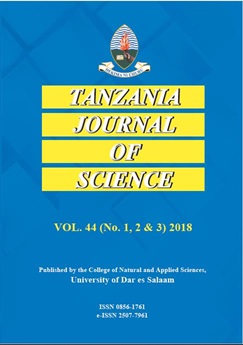Assessment of Tree Species Richness, Diversity, Population Structure and Natural Regeneration in Nongeni Forest Reserve in Morogoro Region, Tanzania
Abstract
This study examined tree species richness, diversity, population structure and regeneration in Nongeni forest reserve, Morogoro, Tanzania. The study deployed plot sampling technique whereby a total of 20 plots of 0.05 ha each were randomly established in the forest. All species and individuals encountered in each plot were counted, identified and DBH measured. A total of 751 individuals/ha representing 24 species belonging to 11 families were recorded. Family Fabaceae was dominant with 9 species. The Shannon-Wiener, Margalef, Simpson ' s and Pielou J index were calculated as 2.667, 3.474, 10.58 and 0.839, respectively. The Diplorhynchus condylocarpon (52.18) was the dominant species in terms of species importance value index (IVI) followed by Antidesma venosum (27.40) and Stereospermum kunthianum (21.16). The forest mean basal area was 10.80 m2/ha whereby D. condylocarpon (2.26 m2/ha) had highest value followed by Julbernardia globiflora (1.36 m2/ha). Of the observed species, 12.5% exhibited good regeneration, 45.8% poor regeneration, 29.2% new regeneration and 12.5% displayed fair/hampered regeneration pattern. Also, 29.1% of the species displayed both poor regeneration pattern and low IVI. The study concludes that the forest was rich in tree species and had good regeneration. However, conservation attention and proper management strategies for the species that exhibited poor regeneration and low IVI is imperative.
Keywords: Diversity, Forest health, Importance value index, Regeneration, Species richness


